There is a tool called TSeriesBandTool which can do this with a little bit of work.
Add an extra series and make it identical as your series, but with a maximum of your limit.
This is how it looks in the Tools editor :

It will fill the difference between the two series with a color of your choice.
Update
Made a proof of concept, see image.
Added a third Series and a second TSeriesBandTool to fill the bottom part with a second color.
I'm sure it's possible to do with less code, but this is good enough for a demonstration.
Update 2
Made some code refreshments.
Update 2.5
Now handles arbitrary X-values as well, not only integers.

Here is the code :
uses Series, TeeTools, TeeSeriesBandTool;
Procedure DrawLimitAreaChart(S1, S2, S3: TLineSeries; YLimit: Double;
BT1, BT2: TSeriesBandTool; OutlineWidth: Integer;
OutlineCL, TopCl, BottomCL: TColor);
Var
i: Integer;
iX: Double;
Begin
S1.LinePen.Width := OutlineWidth;
S1.Color := OutlineCL;
S2.Color := OutlineCL;
S3.Color := OutlineCL;
for i := 0 to S1.Count - 1 do
if (S1.YValue[i] > YLimit) then
begin
if (i > 0) and (S1.YValue[i - 1] < YLimit) then
begin // Last point below limit
iX := (S1.XValue[i] - S1.XValue[i - 1]) * (YLimit - S1.YValue[i - 1]) /
(S1.YValue[i] - S1.YValue[i - 1]) + S1.XValue[i - 1];
S2.AddXY(iX, YLimit);
if (i < S1.Count - 1) then
Continue;
end;
S2.AddXY(S1.XValue[i], YLimit); // Set to Ylimit
end
else // Below Ylimit
begin
if (i > 0) and (S1.YValue[i - 1] > YLimit) then
begin // Last point above limit
iX := (S1.XValue[i] - S1.XValue[i - 1]) * (YLimit - S1.YValue[i - 1]) /
(S1.YValue[i] - S1.YValue[i - 1]) + S1.XValue[i - 1];
S2.AddXY(iX, YLimit);
end;
S2.AddXY(S1.XValue[i], S1.YValue[i]); // Same value
end;
for i := 0 to S2.Count - 1 do
begin
S3.AddXY(S2.XValue[i], 0.0);
end;
{ - First TSeriesBandTool }
BT1.Series := S1;
BT1.Series2 := S2;
BT1.Brush.BackColor := TopCl;
BT1.DrawBehindSeries := True;
BT1.Transparency := 50;
{ - Second TSeriesBandTool }
BT2.Series := S2;
BT2.Series2 := S3;
BT2.Brush.BackColor := BottomCL;
BT2.DrawBehindSeries := True;
BT2.Transparency := 50;
End;
procedure TForm1.Button1Click(Sender: TObject);
const
// Example data
YVAL: array [0 .. 10] of Double = (10,40,45,20,48,5,47,47,47,47,30);
var
i: Integer;
YLimit: Double;
S1, S2, S3: TLineSeries;
begin
Chart1.SeriesList.Clear;
S1 := TLineSeries.Create(Self); // Contains real data
Chart1.AddSeries(S1);
S2 := TLineSeries.Create(Self); // Data below Ylimit
Chart1.AddSeries(S2);
S3 := TLineSeries.Create(Self); // baseline data
Chart1.AddSeries(S3);
for i := 0 to 10 do
S1.AddXY(i, YVAL[i]);
YLimit := S1.MaxYValue * 0.75;
DrawLimitAreaChart(S1, S2, S3, YLimit, ChartTool1, ChartTool2, 2, clBlack,
TColor($0024FF){clOrangeRed}, TColor($FF4D4D){clNeonBlue});
end;
So what the code does :
Fills in the X,Y data into series[0].
Calls DrawLimitAreaChart procedure where a new series is calculated from series[0] such that no part is above the Ylimit. Finally a third series is applied as a baseline to the second series. The three curves together with the two TSeriesBandTools now forms a two color region area chart.
Update 3
As per request here is a chart example with the X axis as time. The code for doing this is in my comment below.




